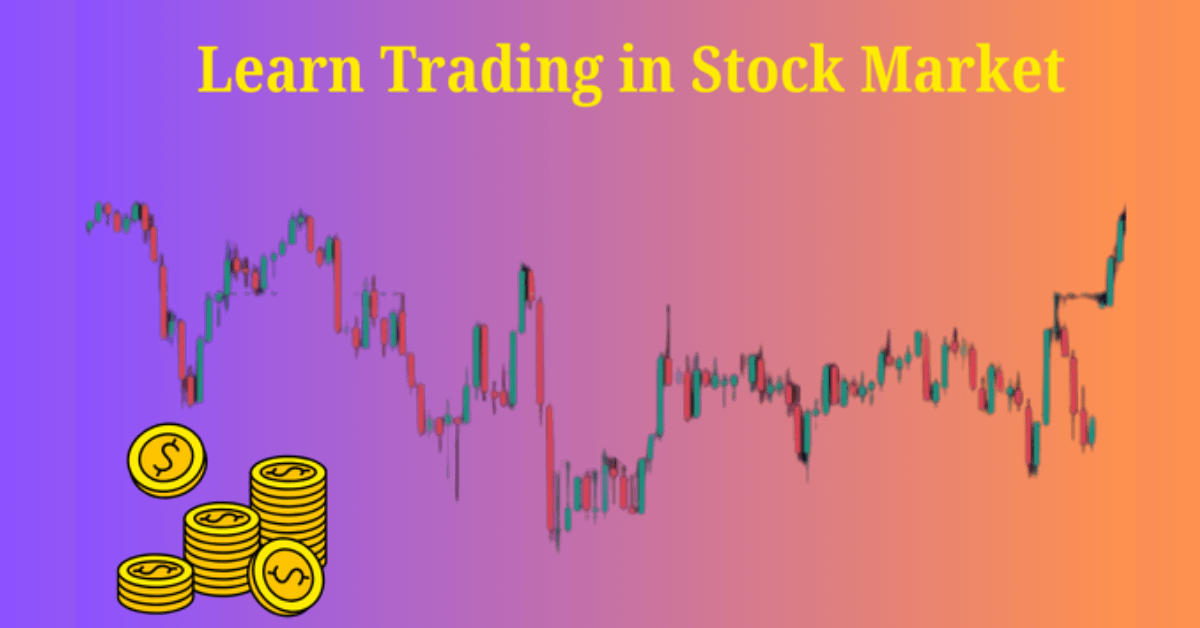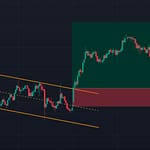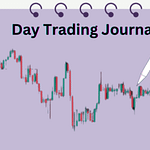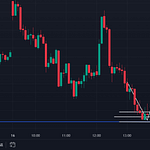Imagine having the power to make money with just a few clicks of buttons on your computer or phone. This is the exciting world of stock market trading! People all over the world are buying and selling stocks in hopes of making a profit and achieving financial freedom.
A stock market is like a giant marketplace where companies sell pieces of themselves, called stocks, to people who want to buy them. By learning how to trade these stocks, you can become a part of this exciting world and potentially make a lot of money.
In this blog post, you will find essential tips and techniques to start your journey in stock market trading. We’ll cover the basics of how to start trading, explore the best different types of trading for beginners, discuss whether day traders make money, and answer common questions about trading difficulty and value.
Plus, we’ll explain how much money you need to get started. By the end of this post, you will have a clear understanding of what is required to start trading in the stock market.
Learn trading in stock market is incredibly valuable, especially for beginners. It offers a unique opportunity to grow your wealth and achieve financial goals that may otherwise seem out of reach. Trading stocks can provide a way to earn extra income, save for a large purchase, or build a retirement fund.
Understanding the stock market helps you make informed decisions about your finances and investments. It’s a skill that not only has the potential to improve your financial situation but also gives you a deeper insight into how the economy works. Starting now means you can build these valuable skills early and set yourself up for long-term success.
Table of Contents
ToggleHow do Beginners Start Learn Trading in Stock Market?
What is the stock market?
A stock market is like a large market where people buy and sell small pieces of companies, called stocks. When you buy a share, you own a small part of that company. If the company does well and makes money, your stock may appreciate and you can sell it for a profit. If the company doesn’t do well, your stock may go down in value and you could lose money.
How does this work?
Buying and Selling: You buy stocks when you think their price will go up and sell them when you think the price will go down.
Stock Exchange: Shares are traded on platforms called stock exchanges, such as the Indian Stock Exchange (BSE and NSE), the New York Stock Exchange (NYSE), or NASDAQ.
Prices: Stock prices change constantly based on supply and demand. If more people want to buy the stock, the price goes up. If more people want to sell, the price goes down.
Set up a trading account
Steps to open a brokerage account:
- Choose a broker: A broker is a company that helps you buy and sell stocks. Examples include Kotak Neo, Zerodha, Robinhood, ETRADE, and TD Ameritrade. Look for one with low fees and good reviews.
- Sign up: Go to the broker’s website and create an account. You may be required to provide certain personal information such as your name, address, and social security number.
- Fund your account: Transfer money from your bank account to your new brokerage account. This money will be used to buy stock.
- Start Trading: Once the funds are deposited in your account, you can start buying and selling stocks.
Educate yourself
Importance of learning fundamental and technical analysis:
- Fundamental Analysis: This involves looking at the financial health of the company to determine whether it is a good investment. You check things like the company’s earnings, debts, and how much money it’s making.
- Technical Analysis: This involves looking at stock price charts and patterns to predict future price movements. It’s like trying to predict what a stock price will do based on past behavior.
Resources for Learn Trading in Stock Market:
- Books: Some good books for beginners include “A Random Walk Down Wall Street” by Burton Malkiel and “The Intelligent Investor” by Benjamin Graham.
- Online Courses: Websites like Coursera, Udemy, and Khan Academy offer courses on stock market trading.
- Webinars: Many brokers and financial websites offer free webinars where experts teach about trading.
Paper trading
Practice trading without real money:
What is Paper Trading? Paper trading is like running a practice where you buy and sell stocks using fake money. It helps you learn how trading works without risking your real money. It helps a lot in learn trading in stock market.
How to get started: Many brokerage platforms offer paper trading accounts. Sign up for one and start practicing dealing with fake money.
Build confidence: Paper trading lets you try out different strategies and see how they perform without any financial risk. This is a great way to build confidence before you start using real money.
By understanding the basics, setting up a trading account, educating yourself, and practicing paper trading, you will be well on your way to starting your journey in stock market trading.
Which trade is best for beginners?
Types of trade
Overview of Day Trading, Swing Trading, and Long-term Investing:
1. Day Trading:
What it is: Day trading involves buying and selling stocks within a single day. Day traders aim to make money from small price changes during the day.
Example: Buying a stock in the morning and selling it in the afternoon for a small profit.
2. Swing Trading:
What it is: Swing trading involves holding stocks for days to weeks. Swing traders aim to profit from short-term price movements.
Example: Buying a stock on Monday and selling it next week when the price rises.
3. Long Term Investment:
What it is: Long-term investing involves buying a stock and holding it for several years. Long-term investors aim to benefit from the company’s overall growth.
Example: Buying a stock and holding it for 5 or 10 years as the company grows and the stock price rises.
Pros and cons
Day Trading:
Pros:
High Potential Returns: You can make money quickly if you trade well.
Excitement: A fast pace can be exciting for those who enjoy a challenge.
Cons:
Time and Attention: Constant monitoring of the market throughout the day is essential.
High Risk: You can lose money quickly if a transaction goes wrong.
Swing Trading:
Pros:
Balanced time commitment: You don’t need to watch the market all day, just keep an eye on it every few days.
Good Potential Returns: One can still make good profits without the intense pressure of day trading.
Cons:
Moderate Risk: Stocks can still go down in the short term and you need to be able to handle some ups and downs.
Long-term Investment:
Pros:
Low risk: Over time, stocks tend to rise, especially if you choose strong companies.
Less time-consuming: Once you buy a stock, you don’t need to check it frequently.
Cons:
Patience required: It takes time to see significant returns, so you need to be patient.
Potentially less immediate returns: You won’t see instant profits like day or swing trading.
Recommendation: Why swing trading or long-term investing may be more suitable for beginners
Swing Trading:
Balance: Swing trading offers a good balance between time commitment and potential returns. You don’t have to be glued to your screen all day, but you can still see gains in a relatively short period.
Learning curve: This is a great way to learn about market movements without the intense pressure of day trading.
Long-term Investment:
Stability: Long-term investments are generally more stable and less stressful. You buy stocks in strong companies and hold them for years, letting them grow.
Low risk: The risk is low compared to day trading and is a great way to build wealth over time.
For beginners, it is better to start with swing trading or long-term investing. Swing trading allows you to learn about the market and make profits without the intense demands of day trading. Long-term investments are ideal for those who prefer a safer, more hands-on approach to growing their money.
Do Day Traders Make Money?
Profit potential
Examples of Successful Day Traders and Their Strategies:
Successful Day Traders: Some people have become very successful day traders and have made a lot of money. For example, Ross Cameron, a well-known day trader, has made millions trading stocks every day.
Strategies:
Successful day traders use specific strategies to make profits. It includes:
Scalping: Making a small profit on minor price changes, often holding a stock for only a few minutes.
Momentum Trading: Buying stocks that are moving fast in one direction and selling them before the price reverses.
News-based trading: Buying or selling a stock based on recent news that affects the company’s share price.
Risk involved
High volatility and potential for significant losses:
High Volatility: Day trading involves stocks whose prices can change very quickly. This volatility can lead to high profits but also significant losses.
Loss Potential: If a stock price moves in the opposite direction than you expect, you can lose a lot of money quickly. For example, if you buy a stock expecting it to rise, but it suddenly falls, you could lose your investment.
Stats
Data on Percentage of Successful Day Traders:
LOW SUCCESS RATE: Studies have shown that only a small percentage of day traders make consistent profits. According to a University of California study, only 10% of day traders are profitable in the long run.
High Failure Rate: Most days traders lose money. It is estimated that up to 90% of day traders fail to make a profit and eventually give up.
Skills Required
Discipline, quick decision making and understanding of market patterns:
Discipline: Successful day traders must stick to their trading plan and not let emotions dictate their decisions. This means knowing when to take profits and when to cut losses.
Quick Decision Making: The stock market moves at a fast pace and day traders need to make quick decisions on when to buy or sell a stock. This requires the ability to think under pressure and act quickly.
Understanding Market Patterns: Day traders need to understand stock market patterns and trends. It involves identifying when a stock is likely to go up or down based on historical data and current market conditions.
Although it is possible to make money as a day trader, it requires a lot of skill, discipline, and a high tolerance for risk.
Learning curve
Comparing trades to other skills (e.g. learning a musical instrument):
Just like learning an instrument: Learn trading in stock market is like learning to play an instrument. At first, it can seem very complicated and confusing. Just like you need to learn how to read music and play notes on an instrument, you need to learn how to read stock charts and understand market trends.
Practice makes perfect: Like any skill, trading takes practice. The more you practice, the better you will get. At first, it may seem overwhelming, but over time, things start to make sense and you become more confident in your abilities.
Time commitment
Average Time To Learn Trading in Stock Market:
Initial Learning: For most beginners, it takes months of study and practice to understand the basics of trading.
Proficiency: To become proficient, where you can trade comfortably and make consistent profits, usually requires 1 to 2 years of regular practice and learning.
Continuous Learning: Even experienced traders continue to learn and adapt their strategies as the market changes. Trading is a skill that requires constant learning and practice.
Resources for learning
Online Courses: Advantages of Structured Learning:
Advantages:
Structured Learning: Online courses provide step-by-step guidance for learning trading, which can be very helpful for beginners.
Expert Instruction: Courses are usually taught by experienced traders who share their knowledge and strategies.
Interactive: Many courses include quizzes, assignments, and interactive sessions that help reinforce learning.
Recommended platforms: Websites like Coursera, Udemy, and Khan Academy offer high-quality trading courses for beginners.
Books and Articles: Suggested Reading List for Beginners:
Books:
“A Random Walk Down Wall Street” by Burton Malkiel: Great for understanding the basics of the stock market.
“The Intelligent Investor” by Benjamin Graham: An excellent book that teaches fundamental analysis and long-term investment strategies.
Dr. “Trading for a Living” by Alexander Elder: Focuses on the psychological aspects of trading and practical strategies.
Articles: Many financial websites and blogs offer free articles and tutorials on trading basics, strategies, and market analysis.
Mentoring: Importance of learning from experienced traders:
Benefits of Mentorship:
Mentoring: A mentor can provide valuable advice and guidance based on their own experiences.
Feedback: Mentors can review your trades and provide constructive feedback to help you improve.
Support: Having someone to turn to for questions can make the learning process easier and less stressful.
Finding Mentors: Find local trading clubs, online trading communities, or social media groups where experienced traders are willing to mentor newbies.
Learn trading in stock market can be challenging, but with dedication, practice, and the right resources, it is achievable.
Is it worth trading?
Financial Benefits
Potential for high returns and financial freedom:
High Returns: There is potential to make a lot of money if traded properly. Successful traders can make significant profits, sometimes more than a regular job.
Financial Freedom: If you become a successful entrepreneur, you can achieve financial freedom, meaning you no longer need to work a traditional job. You can have more control over your time and financial future.
Personal Growth
Skills developed through trade:
Analytical thinking: Trading requires you to analyze market data and trends, which helps develop strong analytical skills. You learn to look at information critically and make informed decisions.
Discipline: Successful trading requires strict discipline. You need to stick to your trading plan, control your emotions, and avoid impulsive decisions. This discipline can be beneficial in other areas of your life as well.
Patience: Trading teaches you patience. Sometimes, you have to wait for the right opportunity to trade, and learning to wait can be a valuable skill.
Challenges
Emotional stress, time investment, and potential financial loss:
Emotional Stress: Trading can be stressful. Watching the market fluctuate and experiencing losses can be emotionally taxing. It’s important to manage stress and not let emotions dictate your decisions.
Time Investment: Learn trading in stock market and mastering it requires a significant time investment. You need to devote time to study, practice, and stay updated with market news and trends.
Potential financial loss: There is always a risk of losing money in trading. No matter how skilled you are, the market can be unpredictable and losses are inevitable. It is important to only trade with money you can afford to lose.
Personal Decision
Factors to consider when deciding whether trading is right for you:
Interest and passion: Do you have a genuine interest in the stock market and trading? If you are passionate about it, you will be more motivated to learn and succeed.
Risk Tolerance: How comfortable are you with taking risks? Trading involves financial risk and you need to be prepared for the possibility of losing money.
Time Commitment: Are you willing to invest the necessary time to learn and practice trading? Successful trading requires a significant time investment.
Financial Situation: Do you have the financial stability to handle potential losses? It is important to ensure that trading does not put you in a difficult financial position.
Trading can be beneficial both financially and personally, but it’s important to weigh the benefits against the challenges and make an informed decision that best suits your situation.
How much money do I need to start trading?
Minimum investment
Common starting amount for different types of trading:
Day Trading: Usually requires a large amount of money. The U.S. In, the Financial Industry Regulatory Authority (FINRA) requires you to have at least $25,000 in your account if you make four or more day trades in five business days.
In India day trading in options can done with very small amounts, like 5000/- only. But in stock trading large amount is required. In stocks also there is options and cash available to trade and the amount will be changed as per segment.
Swing Trading: You can start with less money compared to day trading. Many swing traders start with $2,000 to $10,000. This amount allows you to buy and hold stocks for days or weeks.
Long-Term Investment: You can start with very little money. Some brokers allow you to open an account with as little as $100 or $500. This approach involves buying stocks and holding them for years.
Brokerage requirements
Minimum Account Balance and Charges:
Minimum Balance: Different brokers have different minimum balance requirements. Some brokers may require $500 or $1,000 to open an account, while others do not require a minimum balance.
Fees: Be aware of fees charged by brokers. This may include:
Trading Fees: Fees for every trade you make. Some brokers offer commission-free trading.
Account Fee: A monthly or annual fee to maintain your account. Some brokers waive this fee if you maintain a minimum balance.
Other Fees: Fees for services such as transferring funds or using advanced trading tools.
Risk Management
You can lose sight of the importance of investing money only:
Risk of Loss: Trading involves risk and you may lose money. It’s important to use the money you can afford to lose without affecting your daily life or financial stability.
Emergency Fund: Before you start trading, make sure you have an emergency fund saved up. This is money set aside for unexpected expenses, so you don’t have to rely on your trading account in case of an emergency.
Diversification: Don’t put all your money in one stock. Spread your investment across different stocks or assets to reduce risk.
Read more: The Importance of Risk Management in Options Trading
Scaling up
How to gradually increase your investment as you gain experience:
Start Small: Start with little money to get comfortable with trading. That way, you can learn and make mistakes without taking too much risk.
Reinvest Profits: As you start making profits, reinvest them in your trading account. This helps you grow your account without adding extra money from outside.
Increase investment gradually: As your experience and confidence increase, you can gradually increase the amount invested in trading.
Keep learning: Constantly educate yourself about trading strategies and market trends. The more you learn, the better your trading decisions will be.
Starting with a small amount and increasing your investment over time is a smart approach to trading. This allows you to learn and adapt without taking too much risk initially.
In conclusion, Learn trading in stock market is most important, because trading is very risky. Without proper learning, there is a possibility of losing all capital in the market. We cover here the basics of trading, how to set up a trading account, and the importance of educating yourself to trade in the market. We looked at different types of trading including day trading, swing trading, and long-term investing. We recommend swing trading or long-term investing for beginners because of their balanced risk and time commitment.
We examined the profit potential in day trading, the risks involved, and the low percentage of successful day traders. We highlighted the skills needed to succeed in day trading.
We compare learning to trade with other skills, discuss the time commitment required, and outline resources for learning such as online courses, books, and guidance.
Starting your journey in the stock market can be both exciting and rewarding. Although trading involves learning and effort, it offers the potential for financial gain and personal growth. Remember, every successful trader started where you are now—by taking the first step. Be curious, keep learning, and don’t be afraid to start small and grow over time.







